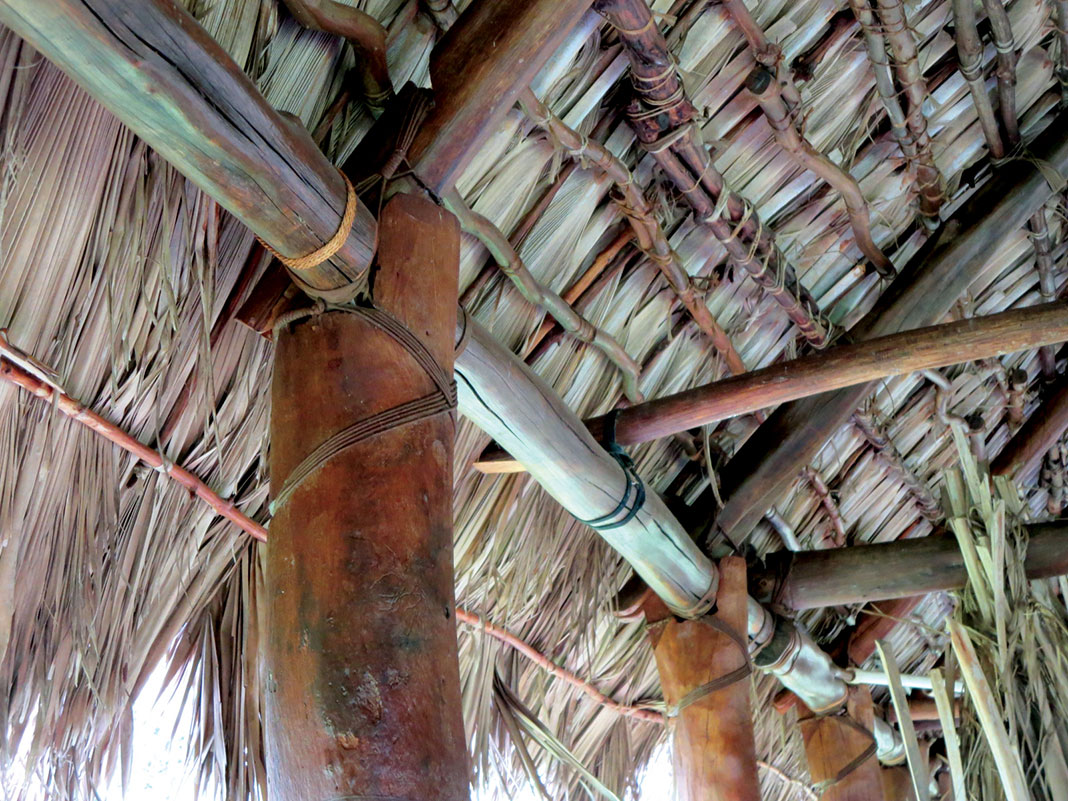
In pre-Contact Hawai‘i, the family and community built the hale, and nature provided the materials. Now, you have to hire a crew: Sinenci’s crew. The price to build a hale “can range from free to $150K, and we work with nonprofits to drop the price,” Sinenci says. “My hale last about ten years until the thatching needs help, although overthatching at six years will help prolong it.” But if you are interested, you will have to move fast. Sinenci is in high demand as a builder as well as a teacher. “Everybody that builds with me learns a valuable skill, from the past into the future,” he says.
The resurgence of the Islands’ indigenous culture is proof of Hawaiians’ desire to see their heritage tangible on the land, from the reopening of historic kalo fields, to the rebuilding of ancient fishponds, and the repair of mighty heiau. They want to see, and use, the light, strong, sustainable hale. They want to reconnect with that triangular trifecta echoed in the apex of the hale: the wa‘a, the kalo, and the hale. The changing climate and its knock-on effects are making many question how humans live on the land, and how to do that better . . . which more often than not seems to mean looking to the past for the answers for the future.
“The message of this emphasis on hale building,” points out Sinenci, “is that we really need to preserve our culture and go back to Mother Nature, and we need to know how to build a canoe, plant our food, and make shelter.” The knowledge of the sustainable, renewable hale may well be something that the rest of the world can learn quickly, and utilize rapidly. It would not be the first Hawaiian idea to go global. Or, as Sinenci puts it: “Hula, canoes, poi—all these go around the world, so why not hale?”






Come Laulima with us bubba
I am an Artisan at Waimea Falls and am interested in hale building (certified). I currently work under the direction of Ka’ulamealani Papa Diamond. I would like to ask if there is any way A step by step guide on traditional thatching(knots) methods can be sent to either myself or Ka’ula at Waimea Falls. I am currently familiar with 3 tying methods as I have worked on the Hale O Lono project from start to finish. Mahalo nui for taking the time to read as well as consider my request.